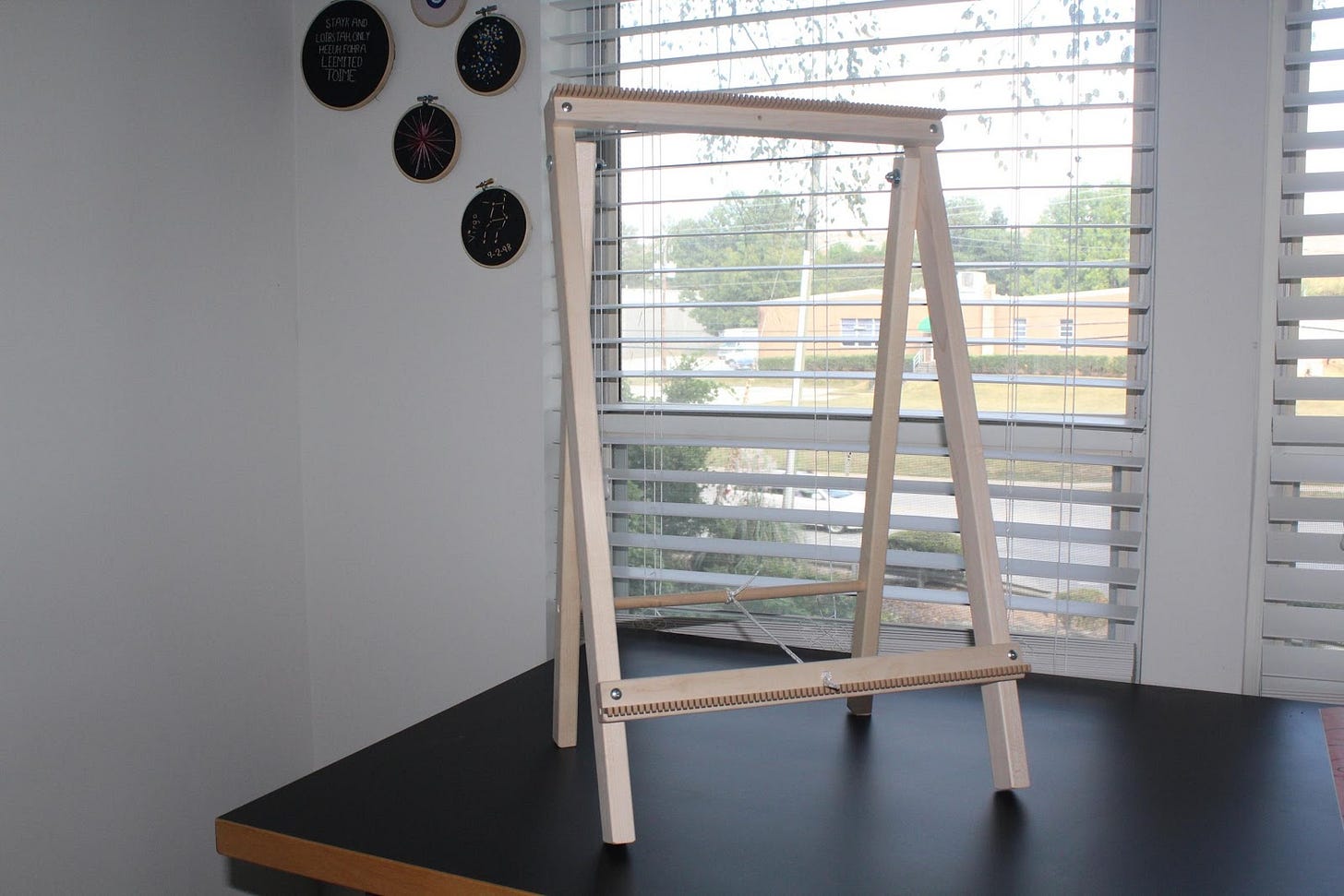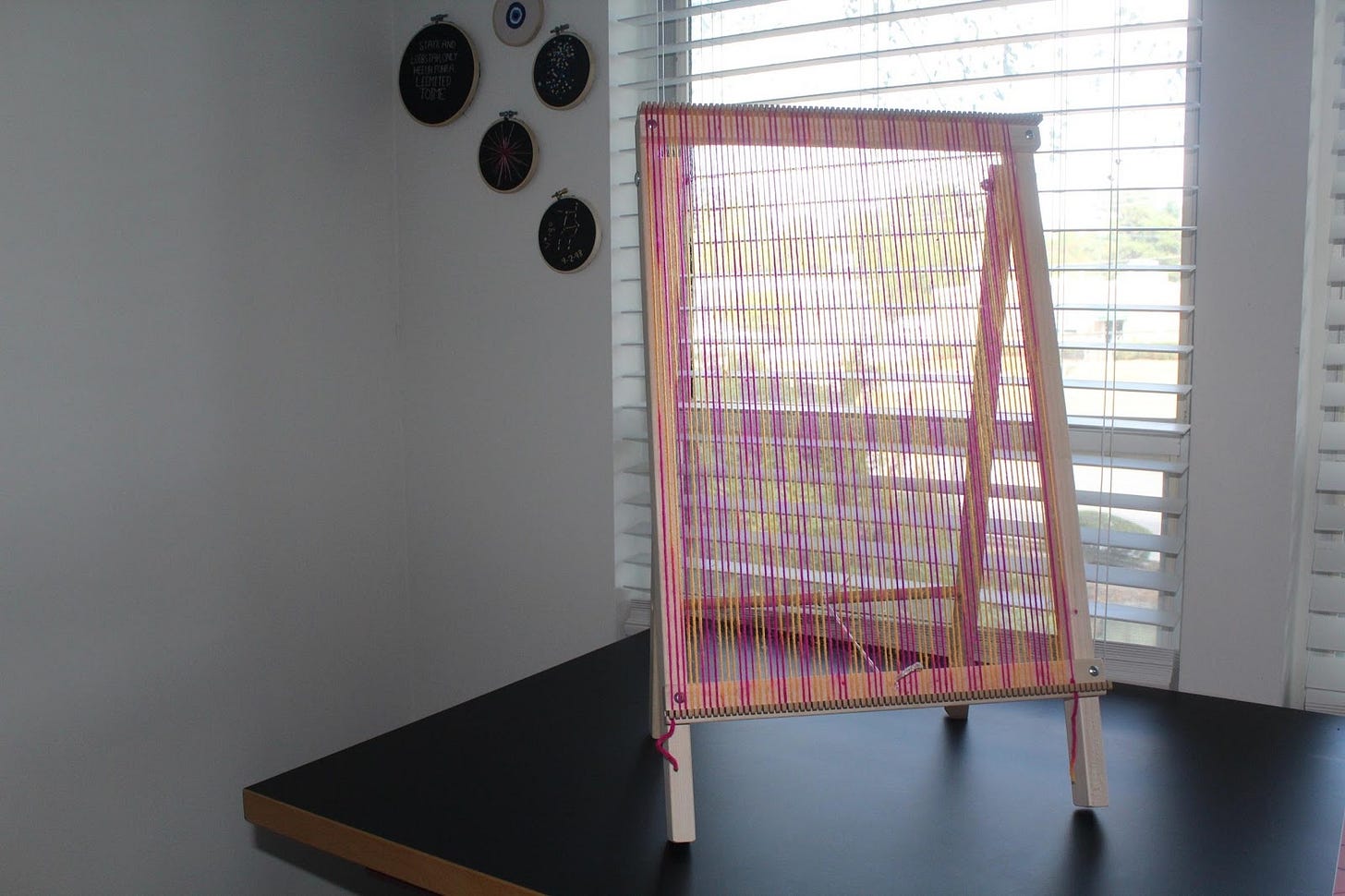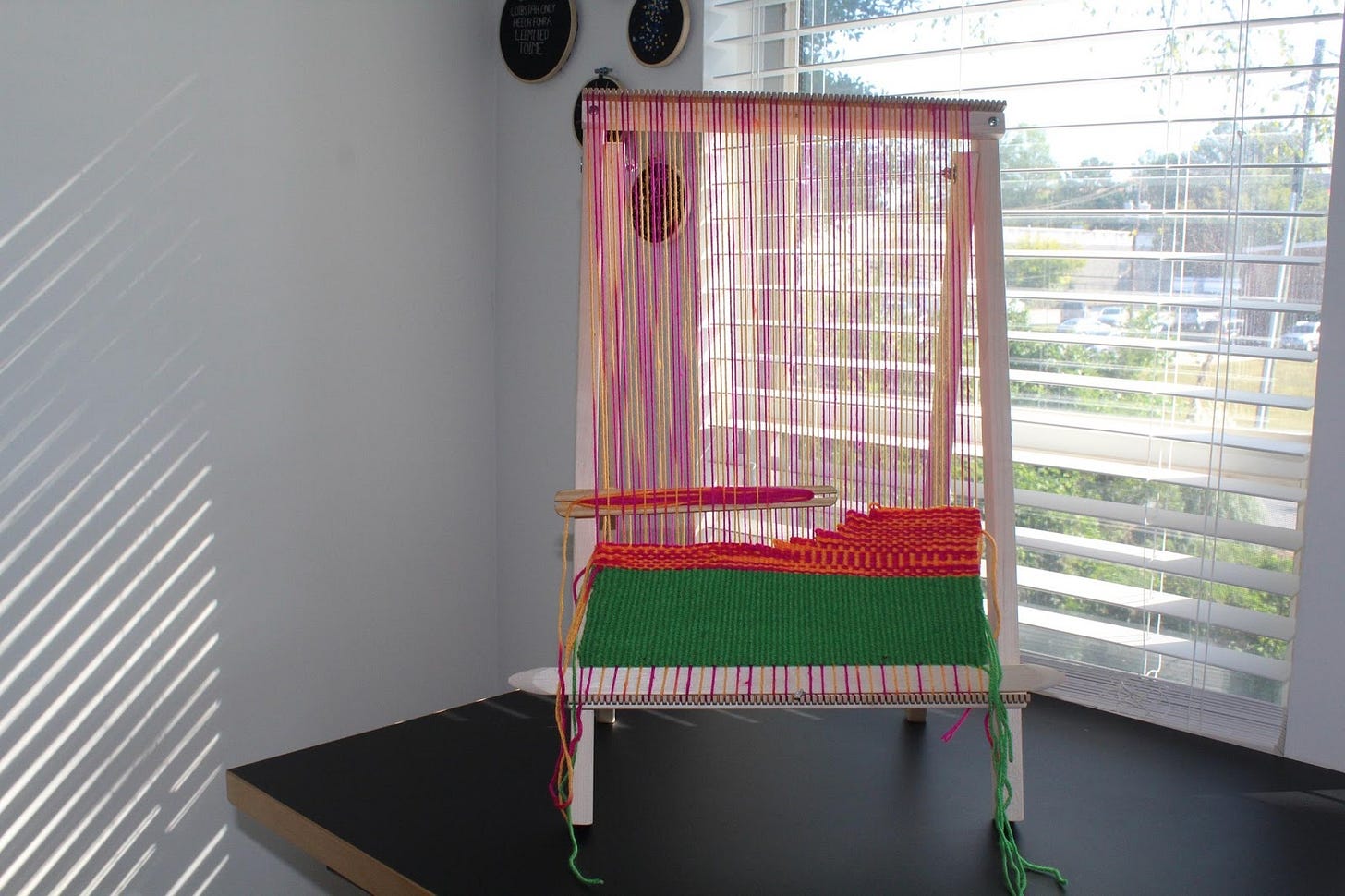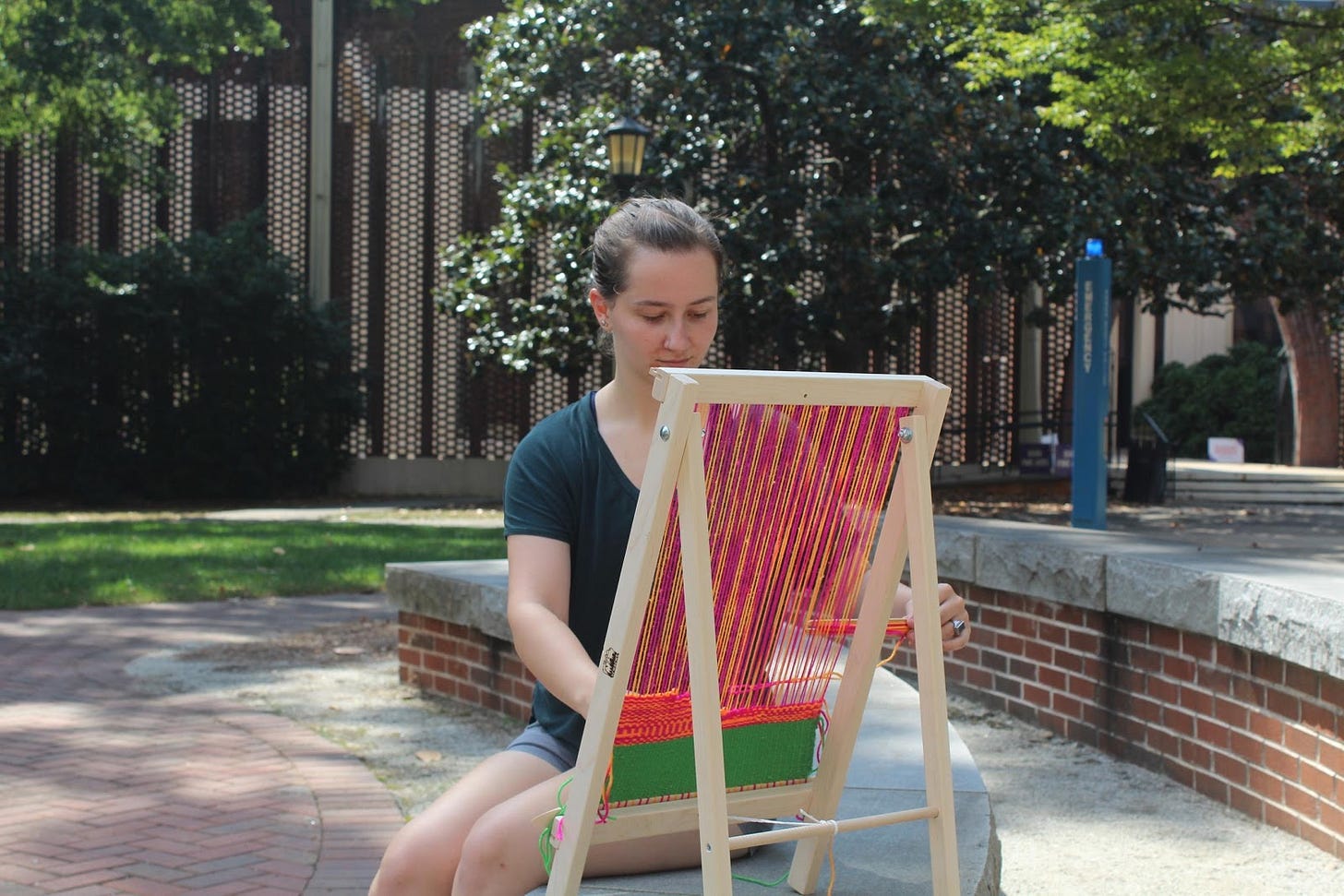
About a year ago I started weaving for the simple reason that it is traditionally a women’s craft, and undervalued in society, and hoped that by the small act of picking up the art I might be able to bring more attention to it. For thousands of years women--real and fictional-- have been weaving and embroidering intricate patterns into fabric, from the shroud of Laertes by Penelope to the Bayeux Tapestry to Erin M. Riley’s erotic portraits of women. To do my part in bringing the art of weaving the recognition it deserves, I created an Instagram page called @tactile_textiles to showcase my processes and hopefully one day show the work of other women. Last winter I picked up a little weaving kit at Barnes and Noble, and I haven’t been able to stop (or shut up about it) since. My friends and classmates have even contributed to my art, gifting me with lap looms they had in childhood, and my mother gave me a large tabletop loom for my birthday.
The process of basic weaving is quite easy. All you need is the loom itself, which can even be made out of cardboard, some yarn or similar fiber, something to guide the yarn through the weaving, and a tool to push the fiber down. The fiber that is actually being woven through is called the warp, and the fiber doing the weaving which would show a pattern is called the weft. In most instances of ancient weaving, the loom would be a little upside down, but only because the loom wasn’t made up of one large frame. They would have looked more like the image below, with a bar across the top where the weave would hang from, and weights attached to the bottom of the warp threads to provide tension.
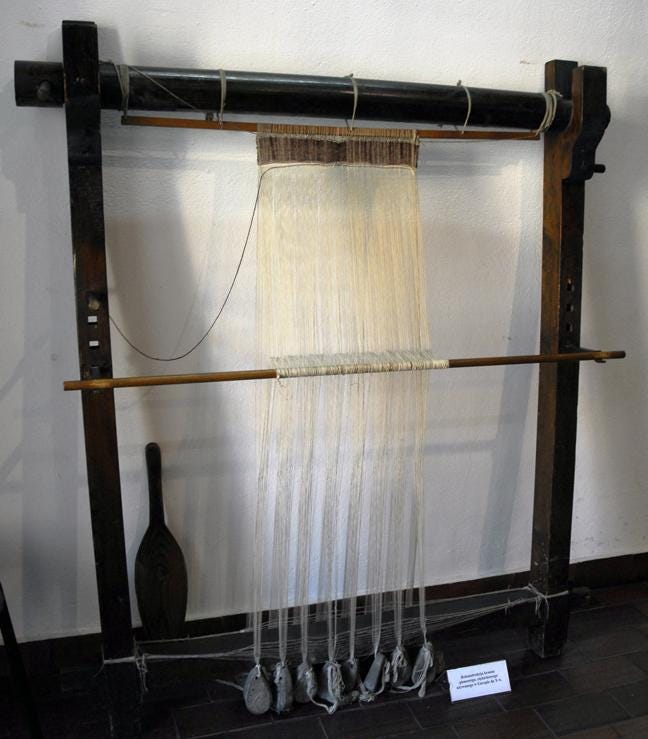
"File:WarpWeightedLoomCTMLodzPoland.jpg" by ArtProf is licensed under CC BY-SA 3.0
One rod would be resting on hooks around the middle of the piece that had two positions to make weaving through one side as easy as just slipping the fiber through the gap to the other side. Then, the rod would be moved to close the gap and the weaver would individually move through the warp threads to weave across in the opposite direction. The weaver would then use some sort of tool to beat the fiber up to close any gap with the rest of the weave. Thus, the weft produces a pattern while the warp holds the entire piece together.
Many small-scale weavers, including myself produce work that is usually more abstract in form, without the capabilities to have multiple spools of thread hanging behind our lap looms or table looms. Those with larger looms are able to have those spools hanging behind for those instances where they need the color for small details or blending colors. Pictured below is my process of warping the loom and free weaving. When I get about two inches away from the top of the loom, I’ll stop weaving, cut the loops, and tie them off to finish the piece. If I end up liking it, I might even attach a dowel rod to the top and hang it on my wall! I’d like to note that I am not a professional which you can see from the way the weaving is slanting in a little bit as I continue, but that’s ok! My whole purpose in weaving is just to have fun with it and bring more attention to it, so I hope whomever reads this will go out and try something new, and make your own weird art.
